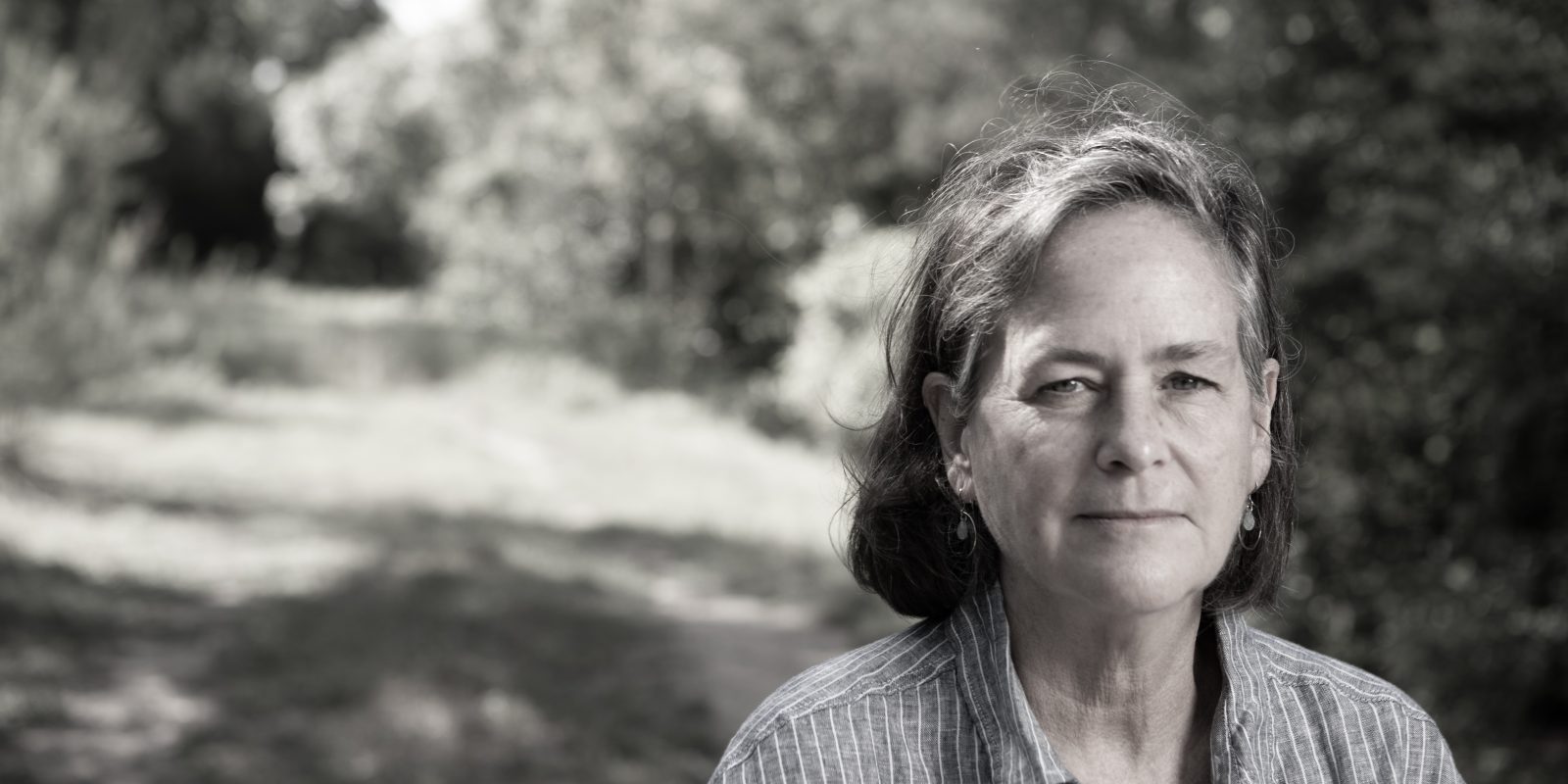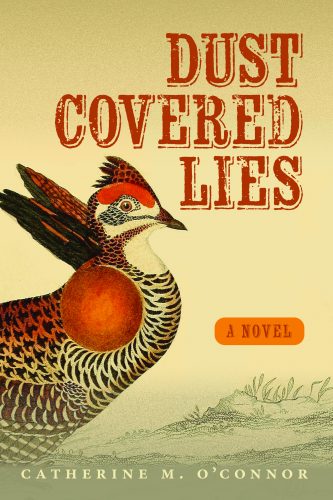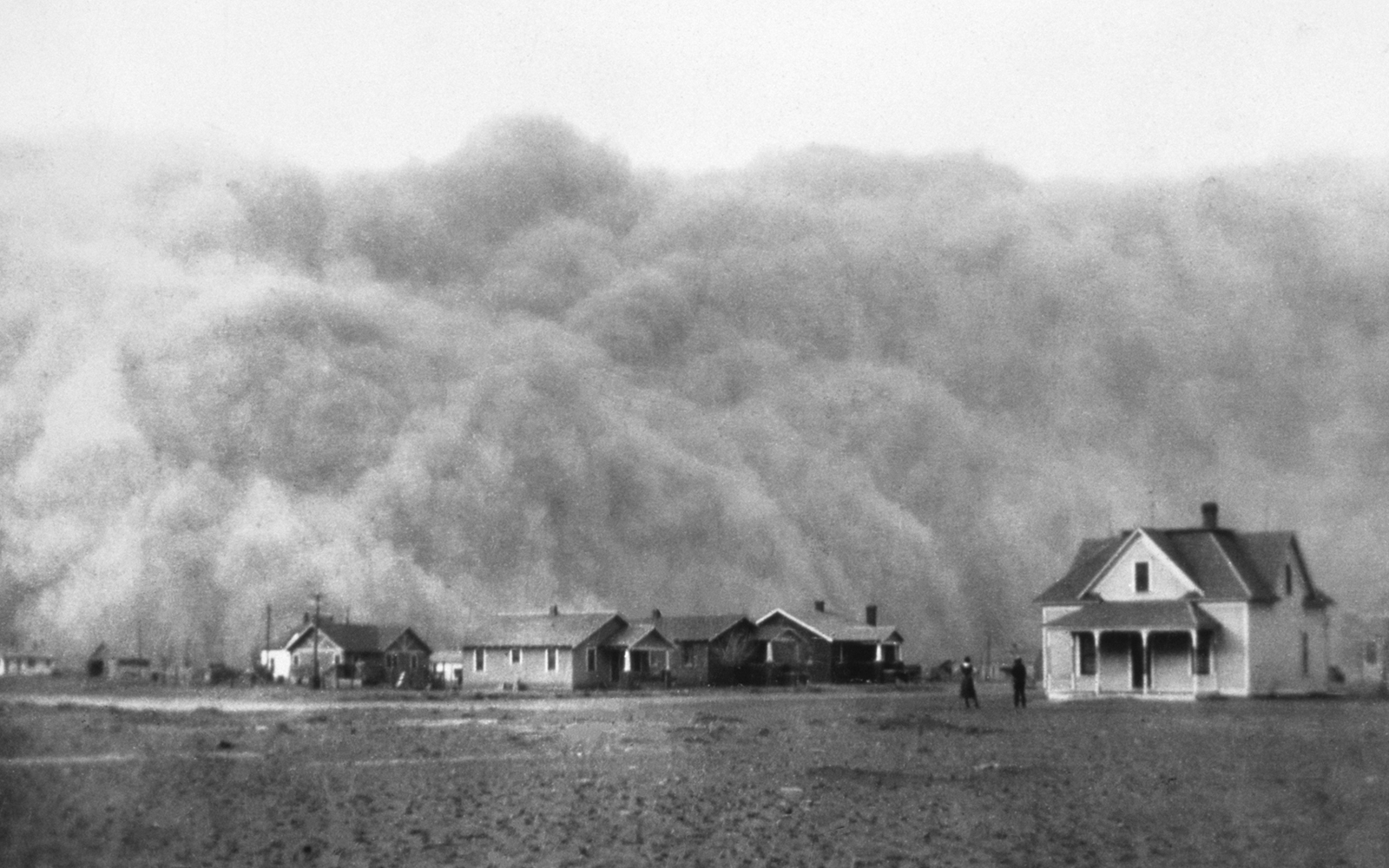
Catherine O'Connor’s “Dust Covered Lies” won two Silver Spur Awards for excellence in Western fiction. Photo by Kirk Weddle
Catherine O’Connor finds acclaim with debut novel “Dust Covered Lies”
When author Catherine O’Connor won two 2025 Spur Awards from the Western Writers of America for her debut novel, Dust Covered Lies, Dan Williams, director of TCU Press, may have been more thrilled than the author.
“The Spur Awards are like the Emmys of Western writing, and we’re a small academic publisher competing for these awards with the likes of the Big Five in New York City,” Williams said, referring to Hachette Book Group, HarperCollins, Macmillan Publishers, Penguin Random House and Simon & Schuster.
For more than 70 years, Western Writers of America has recognized distinguished fiction and nonfiction about the American West with the Spur Awards. Notable past winners include Taylor Sheridan for Wind River and Hell or High Water and David Grann for Killers of the Flower Moon.
“My colleagues and I are ecstatic for Catherine,” Williams said, “and also happy for Patrick Dearen, another TCU Press author, whose novel The Big Dry was named a finalist for a Spur.”
Competing against 50 other titles in the category of Best Western Traditional Novel, O’Connor “won easily,” said R.G. Yoho, Spur Awards chair.
“The judges score all entries and end up with a top five list, which they then submit to me,” said Yoho, who is also a novelist. “I’m beginning my fourth year as Spur Awards chair, and I’ve never seen anyone win a major category so decisively, let alone a first-time author.”

Landscape architect and author Catherine O’Connor began fiction writing in her mid-50s and quickly rose to prominence with her celebrated debut Western novel. Courtesy of TCU Press
Debut novels across five categories of Western fiction are considered for Best First Western Novel, and O’Connor’s high scores rendered Dust Covered Lies the hands-down winner.
The novel follows Frances “Frannie” Abbott, an orphaned teenager and champion markswoman who immigrates to Texas from England. Traveling with her autistic and artistically gifted younger brother, Juan Esteban, Frannie sets out on a hunting expedition along the Colorado River. When a murder occurs and Juan Esteban’s life is threatened, Frannie must lie to protect him. The pair then flee to the Texas Panhandle.
O’Connor admitted she didn’t initially view her novel as exactly Western. The native Austinite chose Texas as the setting, but O’Connor said she “just thought of the novel as American.”
The story toggles between two distinct regions of Texas and two indelible periods of America’s history — the 1870s, in the aftermath of the Civil War, and the 1930s, at the height of the Dust Bowl. O’Connor’s creative process drew from meticulous research to lend credibility to her characters’ experiences and as an antidote to writer’s block.
“I found that when I got stuck, I could always go back to the research,” she said. “I’d go back and find something new, some inspiration for plotting or character development.”
O’Connor surveyed the evolution of Texas landscapes, variations in regional ecology and shifting demographics over the last century and a half. But animating Frannie, Juan Esteban and other characters with irresistible dynamism required a tighter focus on the granular.
“I studied detailed drawings of the sort of passenger ships that might have carried an immigrant like Frannie from Liverpool, England, to Galveston. I read firsthand descriptions of what Galveston was like during that time. I needed to know what it must have felt like to travel in steerage and where European immigrants to coastal Texas were coming from.”
In a 1993 essay, the late David Foster Wallace notes that “fiction writers as a species tend to be oglers” and “born watchers.” O’Connor is no exception. Her immense faculties of observation have been cultivated over decades by a childhood steeped in visual art, undergraduate studies in American literature, a seven-year stint in advertising and training at Harvard as a landscape architect.
“When I was growing up, we had a lot of books around the house; they were mostly art books,” O’Connor said. Her father collected paintings by naturalist and ornithologist John James Audubon, displaying them in the family’s home.
As an undergraduate at Duke University, O’Connor fell in love with American literature despite being a self-described “slow reader.” She was drawn to the visual and spatial details and the unfolding stories within distinctly American contexts. After earning a bachelor’s degree in English in 1983, she moved to New York City to begin a career in advertising.
“It was fun,” she said, but “I was looking for something other than a profession, something that was going to provide an avenue for creative expression.”
O’Connor moved to Boston in 1990 to pursue a master’s degree in landscape architecture from Harvard. Her training there refined her capacity for ogling.
“Memorably, one exercise involved going out and finding a place and returning to that same place weekly for six months,” she said. “Any time of day, we were told to sit there and observe and either draw or write, whatever. The idea was to build on our observational skills.”
This exercise allowed O’Connor to watch a particular place — a landscape — change over time on micro and macro levels, an experience easily transferable to writing an absorbing, character-driven novel.
“I don’t exactly know how to articulate it, but in the same way Henry James could use houses to delineate character, Catherine is able to use landscape to illustrate character,” said Betsy Tschurr, a childhood friend of O’Connor and eager beta reader of early drafts. “I think she sees the natural world and the cultivated world and their relationship to each other in a way other people can’t.”
From the first page, the narration captures Frannie’s view of her natural surroundings, “living on these dusty panhandle plains in a bump-in-the-road town called Leilo” where “few trees manage to survive, just the weed species that ranchers and farmers hate, like mesquite and hackberry, and even those look like they’ve been beaten with a stick.”

Catherine O’Connor’s career as a landscape architect helped hone her ability to write detailed descriptions of places in her novel, including the dust-filled streets of West Texas in the 1930s. Public Domain | NOAA, George E. Marsh Album, Historic C&GS Collection
The author said writing fiction is an extension of her work as a landscape architect. “It’s just another medium of expression for me.”
She is interested in places and people who “have an edge to them” and circumstances that demand the hard-earned grit Frannie demonstrates to build a life amid ostensibly barren surroundings and long odds.
O’Connor needed the same grit to navigate the publishing world. She shopped Dust Covered Lies for more than a year, seeking representation by a literary agent and enduring repeated rejections.
“TCU Press was the first publisher to give me a sense that this might actually happen. My editor said, ‘This is not ready for publication yet.’ In the word yet was this hope because no one had ever said that.”
Kathy Walton, the editor who worked with O’Connor on Dust Covered Lies shortly before retiring from TCU Press, said the manuscript she received was well-written and required only “some tightening up at the sentence level here and there and clarifying a character’s motivation in a couple of places.”
The novel’s predominant themes, including survival and human resiliency, are inextricably bound with the spirit of the American West. But the story’s emotional core is its commitment to hope, a quality O’Connor views as fundamentally Christian and quintessentially American.
“I don’t like to write 100 percent devastation,” O’Connor said. “There has to be hope. There’s always some reason to hope; there’s always a desire for some measure of hope and joy, even in complicated situations.”

Your comments are welcome
Comments
Related reading:
Campus News: Alma Matters
Dan Williams Runs TCU Press
The Honors professor of humanities shows students how literature can help them grapple with everything from darkness to laughter.
Features
Marcela Fuentes achieves a dream with successful release of ‘Malas’
Educator and author Marcela Fuentes spent more than a decade writing “Malas” before its 2024 publication.
Features
The Vision to Win
Dennis Franchione details the highs and lows of his football coaching career in his new memoir.